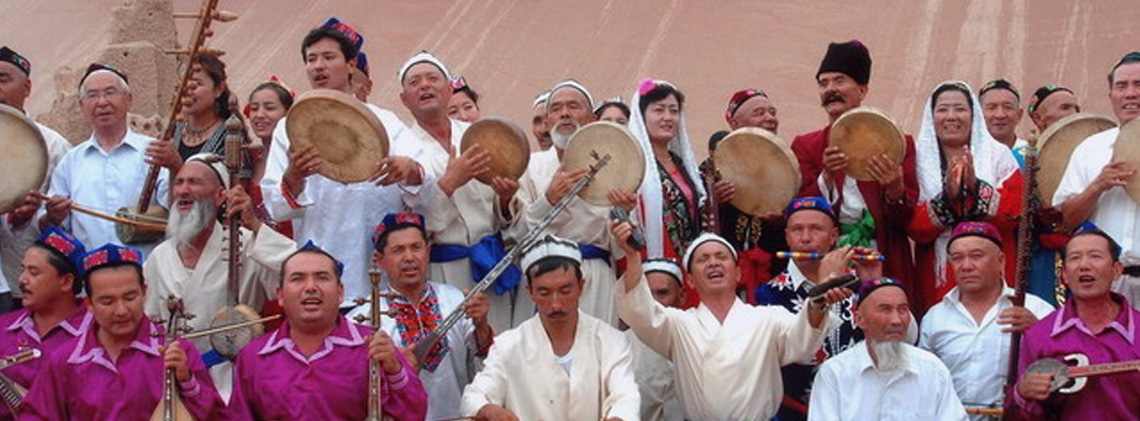
Intangible Cultural Heritage of China
Splendid
Chi Culture
Topic
Intangible Cultural Heritage of China
According to the United Nations Educational, Scientific and Cultural Organization (UNESCO), the “oral and intangible heritage of humanity,” often shortened to “intangible heritage,” refers to intangible cultural properties passed down from generation to generation through folklore and folk practice. Embodying a country’s ancient memory, history, and culture, it represents a people’s cultural identity and its cultural DNA transmitted from generation to generation, and expresses the wisdom and spirit of the nation.
Intangible heritage, threatened by factors like rapid industrialization, increasingly convenient transportation, economic globalization, and rural flight, is in greater danger of damage than its counterpart, material or “tangible” heritage. To protect these non-material forms of culture, UNESCO, collaborating with many countries, launched the Proclamation of Masterpieces of the Oral and Intangible Heritage of Humanity in 2001. In the same year, nineteen cultural elements were recognized as “masterpieces,” including the kunqu opera of China. Further proclamations occurred biennially. By 2018, forty Chinese items had been inscribed on UNESCO’s List of Intangible Cultural Heritage. In addition to kunqu opera, other elements to make the early list are the guqin (ancient zither), the Uygur Muqam (musical ensembles of Xinjiang), and the Urtiin Duu (Mongolian folk long song). The last item was jointly submitted by China and Mongolia.
Muqam, Arabic maqam, is the name of a musical form that originated in the Middle East. It has various meaning including “song,” “mode,” and “classical music.” An abundant variety of Muqam practices are widespread in the Islamic countries of Central Asia, West Asia, South Asia, and North Africa. Folklore has it that when fishing, hunting, and herding in the wilderness and along mountain creeks, the ancestors of Uygurs composed impromptu songs to express their feelings, which were later integrated with other musical forms that evolved into Xinjiang’s Muqam suites. In the 1940s, few Xinjiang musicians could perform the whole standard set of twelve Muqam. Since the 1950s, the government of Xinjiang Autonomous Region and some social organizations have launched several large-scale collections and collations of Muqam. Today, stronger protection has been extended to the preservation and performance of the twelve Muqam.
Similarly, the Mongolian folk long song carries the history of Mongolia. In seasons filled with the fragrance of wild flowers and sweet winds, Mongolian herders rode their steeds to graze in the vast grasslands. In the distance, green grass stretches far into the horizon and clouds float leisurely over the roaming cattle and sheep. Embraced by nature, the herders enjoyed freedom of spirit and sung slow and melodious songs. It is said that the Mongolian long song is the musical form that is closest to nature, akin to beautiful landscape painting.
As of 2013, Chinese elements on UNESCO’s List of the Intangible Cultural Heritage included: oral traditions and expressions such as the Gesar epic; performing arts such as the kunqu opera and guqin; social practices, rituals, and celebrations like the Dragon Boat Festival; knowledge and practices connected to nature or the universe like the acupuncture and moxibustion of traditional Chinese medicine; knowledge and skills that produce traditional crafts such as paper cutting; and physical spaces where traditional cultural activities take place on a regular basis.
In 2006, the Chinese government proclaimed its own first national list of intangible cultural heritage that includes 518 protected elements. Moreover, the government is gradually drawing up a representative list of intangible cultural heritage elements at the national, provincial, municipal, and county levels. Cultural heritage protection is a systematic undertaking involving in-depth fieldwork and careful inventory of traditional cultural elements practiced by common folk. It also involves using databases and other methods to assist in the identification, evaluation, and documentation of these cultural elements. Furthermore, the publication, promotion, and education of the general public to protect China’s intangible cultural heritage by supporting its current inheritors and practitioners is important.




